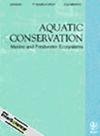Spatial Variability in Juvenile Sea Trout Data Collection and Assessment Methods Across Europe: Limitations and Opportunities for Standardising Analyses
Abstract
Brown trout (Salmo trutta L.) is a widely distributed fish species native to Europe, with high phenotypic plasticity, including resident and anadromous (sea trout) forms. Many populations are in decline, especially the anadromous ecotype towards the southern edge of their range. Evidence-based management is dependent on reliable assessment methods to characterise underperforming populations and identify mitigation actions. Assessment methods based on juvenile data are useful for trout given the species' plasticity. These typically involve comparisons between observed and expected juvenile densities, which vary geographically and with habitat quality. These estimates are mostly obtained through wading electrofishing and field-based habitat surveys. Although some national and regional trout assessment methods have been developed, efforts to develop range-wide evaluations have been constrained by a lack of common protocols. This paper summarises the national methods used to characterise juvenile trout and associated habitat based on information compiled by national representatives of the ICES WGTRUTTA. It then considers opportunities for harmonising data with the aim of developing a range-wide assessment. Survey methods varied substantially within and between countries but showed no clear spatial patterns of coherence. Development of a single set of survey and data collection methods appears highly unlikely. A more pragmatic approach could involve harmonising existing data to make them broadly comparable. This could involve selective use of fish survey data, integration of range-wide macro-scale spatial and habitat data obtained from spatial datasets and use of appropriate modelling frameworks. We also emphasise the critical importance of population data from index rivers to validate and scale juvenile assessments and to compare sampling methods.

 求助内容:
求助内容: 应助结果提醒方式:
应助结果提醒方式:


